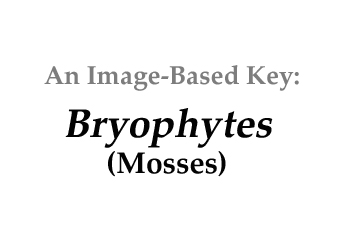|
|
||||
|
|
||||
Name derivation: |
||||
|
Greek Bryo meaning to be full of , to swell, sprout up, burst forth; phyto meaning plant. |
||||
Morphology: |
||||
|
The young protonema of mosses (haploid gametophytic
branched trichomes) look very much like the
branched brichomes of green algae with multiple
discoid chloroplasts per cell. Older moss protonema, to which the younger ones are attached,
tend to be brown. |
||||
Similar Forms: |
||||
Habitat
|
||||
|
Mainly grow in damp terrestrial soil, although some genera such
as Fontinalis
are common in freshwater streams, others such as Sphagnum are found in acidic bogs. Spores are occasionally
encountered in lake plankton samples. Molecular estimates suggest that moss diversity is highest in the Southern Hemisphere and lowest in the Northern Hemisphere, with the tropics having an intermediate level, in the western world. The differences are slight, and analyses of molecular variance (AMOVA) indicate there is no generalized differentiation between major latitudinal zones. All moss lineages have representatives in all three latitudinal zones. At the nucleotide level, mosses best fit the pattern of "everything is everywhere" (Shaw et al. 2005). The first 15 images on this page were found inside an old (~100
years) clear glass pharmaceutical bottle (no lid) in a woodland in Lee, New
Hampshire, USA by Amanda Murby, University of New Hampshire, Durham NH USA |
||||
References: |
||||
|
Shaw, A.J., C.J. Cox, and B. Goffinet 2005. Global patterns of moss diversity: Taxonomic and molecular inferences. Taxon 54(2):337-352. |
||||
















